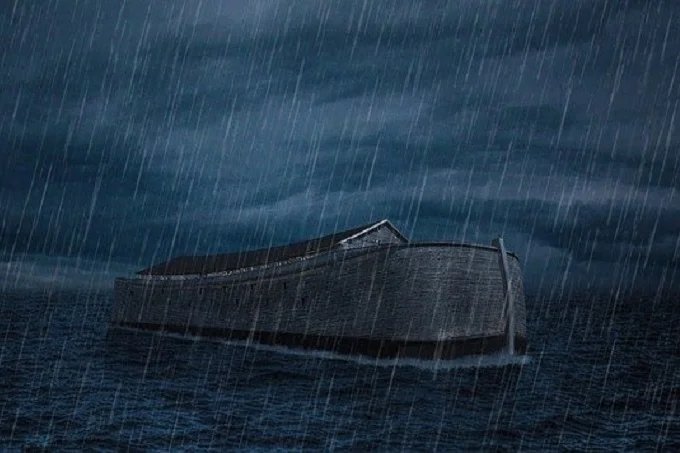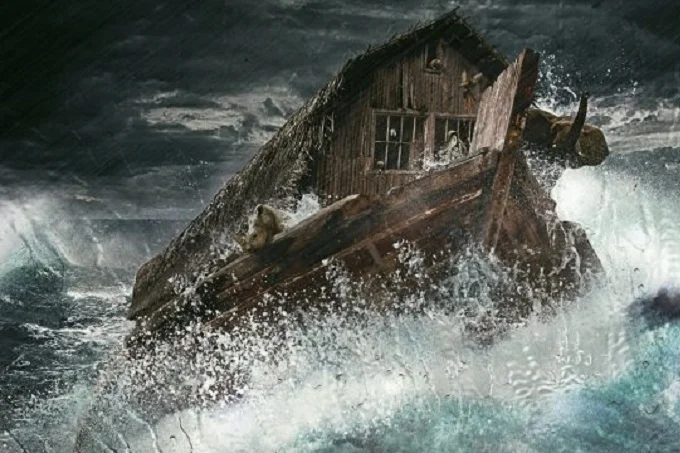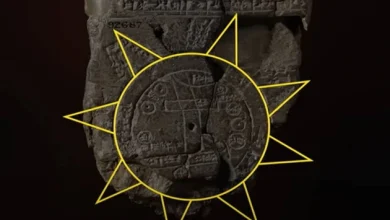What historical events are hidden in the biblical story about the Flood

The story follows God’s decision to destroy the world by Flood, the building of the ark for specific animals, Noah and his family, and God’s vow (the Noahic Covenant) to ensure the ongoing survival of life under the assurance that he would never send another flood.
Our planet has experienced many disasters, cataclysms, wars, and other events throughout its existence, the scale of which can compete with the wildest imagination. Few people know, but about 6 million years ago, the Mediterranean Sea did not exist. In its place was a salt desert. Humanity will learn about it millennia later, thanks to the painstaking research of geodesists. No witnesses would confirm this phenomenon – intelligent life on Earth appeared much later. But there is information about other, no less important events in the ancient sources, which unfolded before people’s eyes. Except that most of them have come down to us in the form of myths, traditions, and legends. Such as the biblical parable of the Flood, which modern archaeologists find more solid scientific support.
What does biblical story say about Noah’s Ark and the Great Flood
According to the biblical story of the parable of the Flood, centuries after the creation of the world, angels began to make love to earthly women. The foundations of morality were undermined, and sin fell on the shoulders of men. Disappointed, God decided to destroy the entire human race, and with it, all life on Earth.
Only one man, the righteous Noah, deserved God’s salvation. God commanded him to build a giant ship that was to contain all living creatures. It took a hundred years to build this ship. When the ark was completed, Noah, his wife, his three sons, and their spouses, and the animals settled aboard.
Then came a terrible downpour that raised the water level to the mountaintops. All life on land died. Noah’s ark floated on the waves for another 150 days until the waters began to recede and the summit of Mount Ararat became visible. Noah let the birds out to reconnoiter. And when the doves brought the righteous man an olive leaf, he knew that the threat was over. Noah’s family headed south. His sons and their wives were to give a new beginning to the entire human race.
Why the account of the Great Flood began to be questioned
For thousands of years, the biblical legend has not been questioned. But with the development of science, scientists still have some questions. According to many engineers, Noah could not build such a ship on his own at that stage of shipbuilding development.

The main problem with the wooden ship was its length. The sides could not support the weight of the structure. The plating would quickly crack and leak in the sea, and the ark would go underwater. Sure, Noah could have built an ark, but it would have been much smaller.
Another question that has interested scientists is how Noah placed the various animals on the ark, with each species divided into pairs. According to various estimates, there are about 30 million different species of animals on Earth. So it took Noah not only an entire fleet of arks but over thirty years to load the animals onto the ship. On the other hand, the Bible says that it only took seven days for the man to do this.
But it is the fact of the Flood itself that is most in doubt. The search for evidence of the Flood began a century and a half ago. Various geologists have surveyed the entire continent but have not found a single fact to prove the event. On the contrary, there are a number of arguments that refute the event.
The story of the Flood nullifies everything that geologists have learned about the history of our planet. For the water that flooded the Earth to reach the top of the Himalayas would require several times more water than the present volume of the World Ocean. Where could so much water have come from? The book of Genesis tells us that it rained for 40 days and 40 nights. But even this amount is not enough to completely flood the planet.
The Bible also says that water came from the headwaters of the abysses. Except that scientists say that such an amount of water simply could not come out of geysers. Otherwise, it would not have been water, but a swamp in which it would have been impossible to travel by ship. Flooding the Earth’s entire surface would have caused changes in the Earth’s atmosphere.
With so much water vapor entering the atmosphere, human lungs could burst from the increased pressure. There is another threat: geyser eruptions contain toxic gases, and their concentrations can be deadly to humans.
Legends of the World Flood in the cultures of other peoples
In the 1860s, while excavating ancient Assyria, British Assyriologist George Smith discovered a library of clay tablets. Among them was a Babylonian epic poem recounting the Great Flood. Over the next few decades, various accounts of a similar flood were discovered in the Middle East. Scholars have concluded that the Biblical parable is nothing more than a retelling of more ancient legends.
The legends of the floods occurred only where a great river changed its course (Mesopotamia), where monsoon rains caused great floods (South and Southeast Asia), and where tidal tsunamis caused devastation (along the coast of Mexico). Ancient Egypt knew no such cataclysms, so there are no stories of floods.
The Jews, who wandered the waterless deserts of northern Arabia for centuries, had very vague ideas about floods. Therefore, scholars are certain that the plot of the biblical legend was borrowed from the Babylonian epic.
In general, the Sumerian, Akkadian, late Babylonian, Indian and Biblical, as well as the ancient Greek legend of Deucalion and Pyrrhus, are so similar that it is natural to assume that they were all borrowed from the same source. The biblical version differs from the other legends only in the names of theGodd and heroes: in the Sumerians,Noah’s mission is taken by Utnapishtim, in the Akkadians by Atrahasis, in the late Babylonian version by Ziusudra, in the Hindu legend, the ship of Vaivashta is mentioned.
All the pagan legends of the Flood are based on the same principle. The gods, angered by the behavior of humans, decide to exterminate humanity by bringing a flood upon them. But one of the gods feels pity for the hero and saves him, giving the whole human race a chance.
The biblical parable, dating back to the eighth century BC, does not differ much from the above version, but it has one important difference: one God both punished and saved people. In the sixth century BC, the legend has the main thing – the morality. According to it, God saves Noah not because of his whim, but because of the man’s righteousness that sets him apart from the rest of sinful humanity.
Legends of the Flood, found in the epics of the Middle East, are planetary in nature. Scientists believe that 5,000 years ago, there was a massive flood in Mesopotamia. All settlements were flooded, and a layer of mud brought by the river destroyed the civilization that populated Mesopotamia.
Was this Flood a prototype of the Great Flood? Hardly so. Floods on rivers occur frequently enough, and even the most destructive of them are rarely perceived as cosmic catastrophes. Only individual cataclysms on a much larger scale can give rise to such legends. So what was it?
Where did the Flood really happen?
In 1996, US geologists William Ryan and Walter Pitman put forward the theory that the basis for the legend of the Flood was the Black Sea Flood. Around 5600 BC, a strong earthquake caused a crack in the mountain range connecting Europe and Asia.

This fissure caused a huge flow of water to erupt from the Mediterranean basin into what is now the Black Sea. At the time, it was a low-salinity or even freshwater lake. As a result, 155,000 square kilometers of land and its inhabitants were submerged.
Michael Weissing, a seismology professor at the University of Washington, and his assistant had been studying data collected by seismographs around the world for years. In 2007, they discovered that beneath the eastern part of Eurasia and North America is a huge reservoir of water, between 1,200 km and 1,400 km deep.
Presumably, these reservoirs were formed along with the planet. In prehistoric times, it is possible that the Earth’s crust shifted, causing water to pour out. The level of the world’s oceans rose sharply, causing severe flooding. In 2006, British scientists from the University of Manchester investigated the same version and found seawater at a depth of about 1,500 km.
Russian mathematician Andrei Sklyarov made his own calculations and claimed that 13,000 years ago, the Flood was caused by the fall of a celestial body. American geologist Gregory Riskin argued that the water apocalypse was caused by the explosion of methane, which was released from the oceans 250 million years ago in huge quantities. This process was caused by a meteorite fall or repeated earthquakes.
However, there are some scientists who are skeptical of any claims about the real fact of the Flood described in the Bible. And even modern scientists’ evidence of the reality of the Flood can’t change their views.




